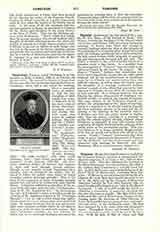

Tametsi (ALTHOUGH), the first word of ch. i, sess. 24, De Ref. Matr., of the Council of Trent. This chapter contains the legislation of the Church which was in force until Easter, 1908, concerning clandestine marriage. It decrees thus: Those who attempt to contract marriage otherwise than in the presence of the parish priest or of another priest delegated by him or by the ordinary, and before two or three witnesses, the holy synod renders wholly incapable of contracting and declares such contracts null and void. The reader is referred to the article Clandestinity for a complete study of this decree. In a modified form the prescriptions of “Tametsi” were extended to the universal Church by the decree “Ne temere”. The chapter “Tametsi” declares that clandestine contracts of marriage freely entered into are valid, unless rendered null by the non-observance of regulations made by the Church, and anathematizes those who hold the contrary, as well as those who falsely assert the invalidity of a marriage contracted without parents’ consent, or who affirm that parents by their approval or disapproval may affect the binding force of such contracts. It is declared, however, that the Church has always disapproved of marriages contracted secretly, or without the consent of parents. This same chapter of the Tridentine Council prescribes the promulgation of the banns of marriage, which is a repetition of the Fourth Lateran Council, the form expressing consent to be used and the inscribing of the marriage in the parochial register. It declares also that any priest, secular or regular, other than the pastor, assisting at a marriage or giving the solemn nuptial blessing without proper delegation is suspended at once and remains under suspension till rightly absolved by the ordinary of the parish priest of the contracting parties. This censure, however, is no longer incurred, though punishment may be meted out to those who offend in this matter. Finally, “Tametsi” recommends that those about to marry approach the Sacraments of Penance and the Eucharist, and that local customs and rites connected with marriage be observed. (See also Marriage, Moral and Canonical Aspect of.)
ANDREW B. MEEHAN

